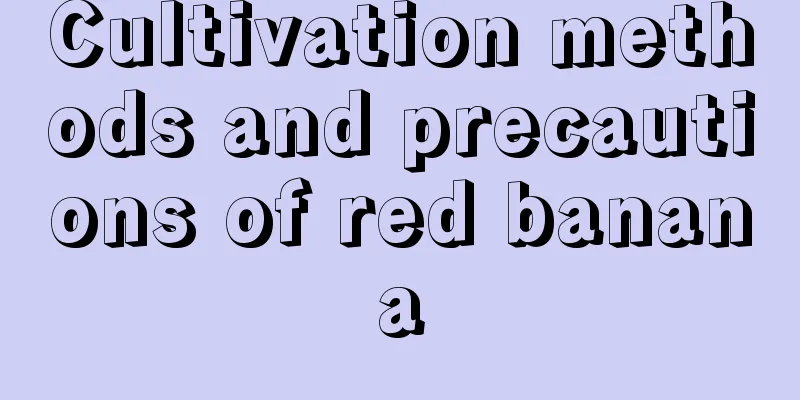Causes and treatments for yellow leaves of octopus orchid

1. Soil issuesReason: Octopus orchid originally grows in cold mountainous areas and has low requirements for soil. However, generally, you should choose soil with good drainage and air permeability. Soil with poor drainage and poor air permeability can easily lead to water accumulation in the pot. If the pot is damp for a long time, some roots are prone to rot and cannot provide sufficient nutrients to the leaves. If the leaves lack sufficient nutrients, yellow leaves will appear. Solution: At this time, the flower soil needs to be replaced in time. It can usually be replaced with fine-grained volcanic rock, bark or burnt earth. 2. Temperature is too lowReason: It is not cold-resistant and is suitable for growing in a high temperature, high humidity and well-ventilated environment. If the temperature is too low, the leaves will gradually turn yellow, the roots will turn dark brown, and eventually some plants will die. Even plants that have not died will recover very slowly after the temperature rises. Solution: Place the plant in a warm and well-lit place indoors and reduce watering to ensure the roots are relatively dry. If the indoor temperature is lower than 8℃, take measures to keep warm. During daily maintenance, the plant growth temperature must be maintained between 15-35℃. It is hot in summer, so avoid excessive temperatures and cool down appropriately. The temperature in winter cannot be lower than 8℃. 3. Too little fertilizerReason: Octopus orchid plants are large and require more fertilizer, especially during the vigorous growth period. Insufficient nutrients can cause malnutrition of the plant and result in yellow leaves. Solution: If yellow leaves are caused by insufficient fertilization, just apply fertilizer in time. During normal maintenance, try to keep fertilizing once every 1-2 weeks. During the growing period, increase the frequency and amount of fertilization appropriately. Liquid compound fertilizer can be used as fertilizer, and try not to use granular fertilizer as it is difficult for the plants to absorb. Fertilization can be suspended during the flowering period and the cold winter period. |
<<: Causes and treatments for severe yellowing leaves
>>: Causes and treatments of yellowing leaves of nail orchid
Recommend
How to raise a ball of armor
1. Use soil The soil used to cultivate iron armor...
Cure diseases, beautify your skin, and eat it in cooking. You won’t have too many of these flowers on your balcony.
Aloe Vera Care Although aloe vera has very strong...
What should I do if I water honeysuckle too much? What will happen if I water it too much?
1. What to do if you water too much If you overwa...
Symptoms of overwatering peony, what to do if you overwater
1. Symptoms of over-watering It has fleshy roots ...
How to prune osmanthus
1. Pruning time The time for pruning osmanthus is...
The flower language of lisianthus and how to plant it
1. Flower language introduction There are many me...
Can I water the persimmon tree when it is blooming?
Watering the flowering persimmon tree Persimmon t...
How to use catnip
1. How to use catnip Catnip is a plant that cats ...
Kudzu flower pictures
Morphological characteristics of kudzu flowers It...
Flowering and Management of Lilium
Flowering period of lily The flowering period of ...
What should I do if the peace tree does not grow new leaves?
1. Reasons for not growing new leaves Insufficien...
How to sow blue star flowers
Seed selection Selecting seeds before sowing is a...
How to fertilize peach egg plants? This way the leaves will be super tender!
Time and method of fertilizing peach eggs: Peach ...
How to grow hosta on the balcony, what should you pay attention to
1. Sunlight Supplement Hosta is a shade-loving pl...
Diseases and Pests of Brazilian Iron and Their Control
Pests and diseases of Brazilian iron The more com...









